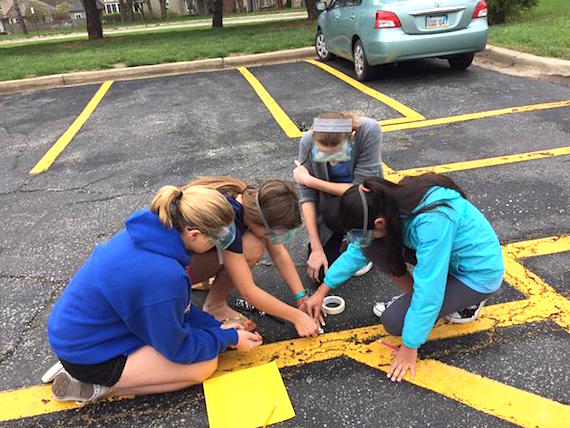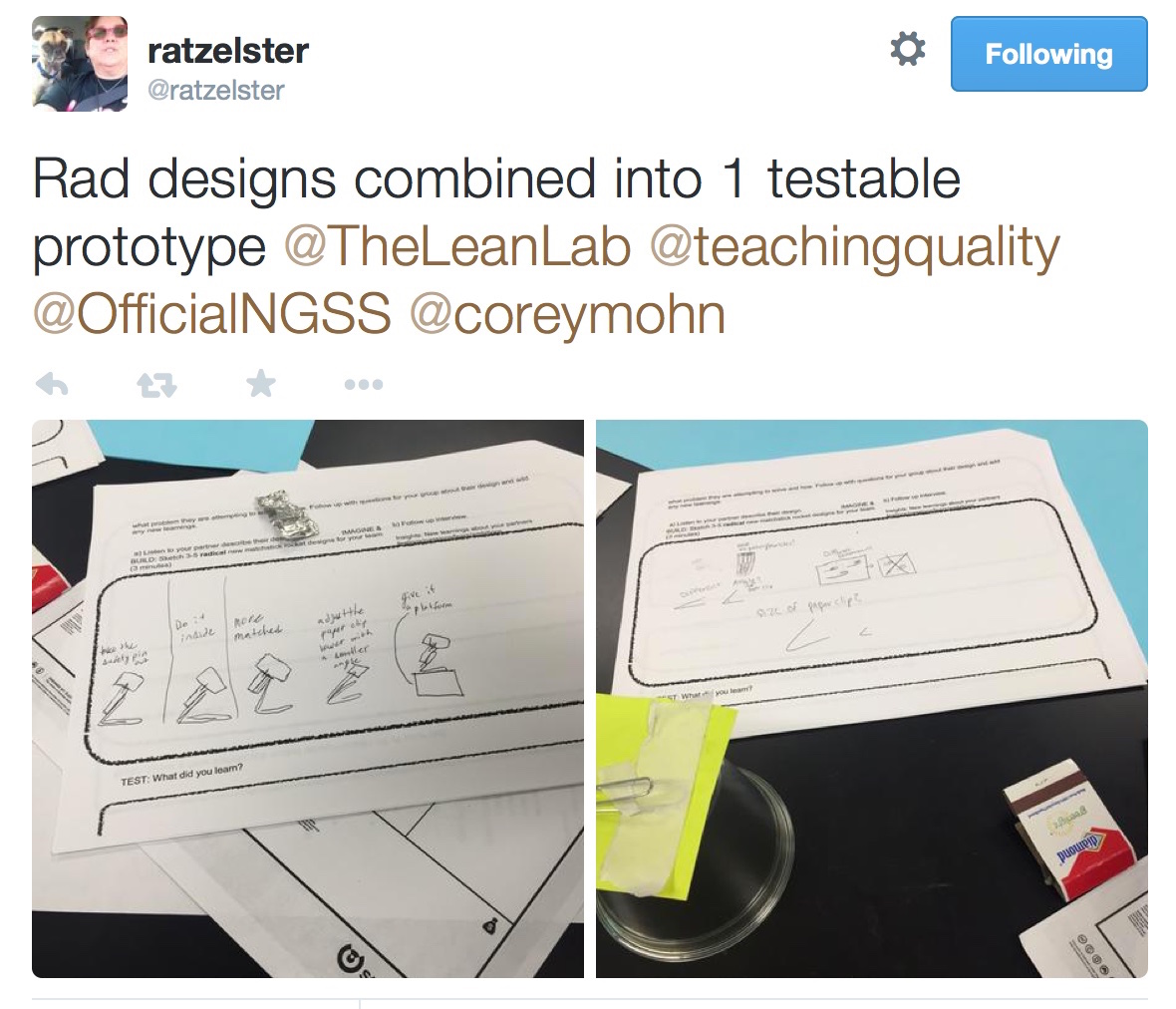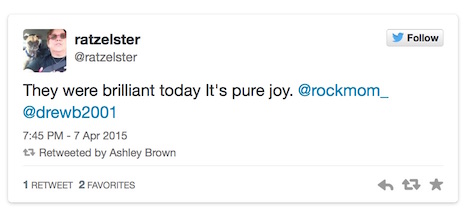STEM Meets NGSS: Matchstick Rocket Engineering
A MiddleWeb Blog
 I’ve been writing recently about the elements that help define a STEM lesson. Marsha Ratzel, a veteran science and math teacher in Kansas, is a long-time friend and fellow middle school science lover.
I’ve been writing recently about the elements that help define a STEM lesson. Marsha Ratzel, a veteran science and math teacher in Kansas, is a long-time friend and fellow middle school science lover.
Marsha volunteered to share an example of her own attempt to build engineering design elements into a physics activity with her eighth grade science students. I’ve agreed to play the “Doctor STEM” role here and critique the lesson. At the end of the post, you’ll see my thoughts about whether this activity meets the STEM lesson criteria I described in my previous post.
Here’s Marsha’s description of her idea:
My teaching these days is heavily influenced by the Next Generation Science Standards. Thinking about how to apply Newton’s Third Law to design a solution to a problem involving the motion of two colliding objects (MS PS2-1) piqued my interest in better understanding how I could incorporate engineering design practices into the instruction.
The basic idea can be grasped from this NASA illustration.
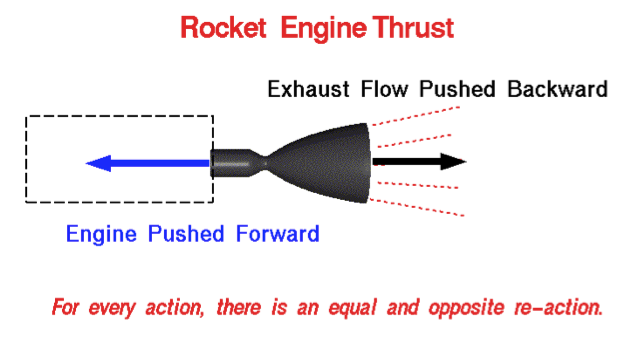
“Making the rocket is simple. Take a cardboard match and a small amount of aluminum foil. I used a rectangle of foil that was about 1 centimeter by 2 centimeters (or about 0.34 inch by 0.78 inch). I carefully folded the foil around the top of the match head. I made sure to cover the whole head tightly. There were no holes in the foil. I sealed the bottom of my match’s foil covering it tightly against the body of the match.
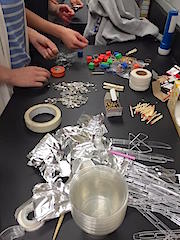
In theory, the heat from the match should have caused the match inside the foil to burst into flame. Since the exhaust from that reaction is tightly contained by the foil, it should have only one place to go: down the tube I had made with the safety pin. And that (thrust) should have launched my rocket forward several feet with a tiny “fwish” sound.
What really happened? I wanted to test a lot of rockets… so I made more than 20 cardboard match rockets. I also made 20 wooden match rockets. I planned to run an experiment to see which launchpad angle produced the longest rocket flight, and which flew farther — the cardboard or wooden rockets.
But 40 ignitions later, I had a grand total of two flights. This experiment failed to launch.”

Marsha Ratzel
A great setup isn’t it? This problem will definitely engage 8th graders because the idea of rockets – and the fires and misfires – will captivate them. My engineering challenge will be to decrease the rate of misfires (from 95% to 50%) as well as fly as far as possible in a straight line. Those two success criteria will be enough to make this an interesting engineering project.
The plan is to offer them a wide array of materials. I’ll supply them with lots of different sizes of paper clips and safety pins, types of matches, and foil. Taking information from this problem, classes will first get a chance to go outside and give it a try.
My expectation is that few students have ever tried building/flying one of these rockets, and testing it out once will be informative to building ideas on how to solve the problem.
It will also give us a chance to gather more data. Since everyone will have different materials, it will be a good chance to have students organize the data in a way that gives them some workable information. How do we organize all these different results? How do our experimental results compare with the author’s?
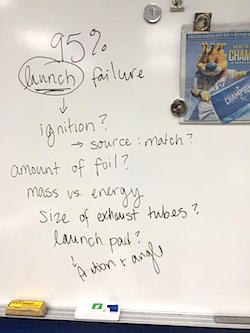
Based on that experience, they will have a chance to draw a solution to the problem from not only their personal experience, but also from 150+ other students and the author. The next day in class, they will have time to individually draw their solution to the problem. They will compare their solutions to their table partners and synthesize/create a blended solution that is the best of all their ideas.
This is part of the NGSS standards as well because they are continually revising their plans while constructing new solutions. The conversations around building these solutions – taking in new ideas and combining them with other ideas – are a powerful way to engage students in one kind of engineering cycle.
Collaboration time will be created so that students feel drawn into the project by the excitement of a rocket that works well but will also be supported by having the chance to talk through possibilities.
Because I picked a problem where the “failure rate” was already so high, students will expect that many of their tests won’t work and they will know going into the Challenge that it’s going to take grit and determination to find a more successful solution.
Research > Design > Testing!
Later, Marsha tried her idea with students and then shared some quick teaching notes at her personal blog:
I finished with the first 3 classes in this fast-paced, lean design cycle. It was a success and there’s much to learn. Today each team had time to test out 2 designs that solved the Matchstick Rocket problem. I think they believed, before they began, that it would be a simple problem. But we had only 3 teams successfully launch all day. Here are three observations:
- Students very much plugged into the pacing and the style of this type of learning. They were asked to suspend judgment and to incorporate the best of everyone’s ideas into a blended prototype they could go outside and test.
- The energy generated by this style of learning made them want to continue…take what we couldn’t do in class because we ran out of time, and continue testing/designing. Any time students want to continue what you start in class at home, you know you’ve had a winning learning activity.
- Collaboration meant everyone could benefit from the wisdom of the group without “copying” and everyone settling on same solution to the problem. So often people are worried that someone will copy their design…in this kind of setup, everyone shares their success so that it can be incorporated and so that the success can be taken further.
A very good start and it’s easy to see how this could be incorporated into all sorts of content and engineering challenges.
Anne again . . .
Here’s why I’m excited about Marsha’s lesson:
- One good use of STEM projects is to redesign and improve existing technology. These students are getting a great feel for that principle as they try to improve the launch mechanism.
- As Marsha road-tested the idea for the first time, I followed the students’ progress on Marsha’s Tweets throughout the lesson implementation. Kids were wondering, planning, designing, testing and redesigning – all part of the engineering design cycle. The neat thing is that they were not rattled by failure and are developing persistence needed to complete the project – another STEM goal.
- In my book, Marsha’s lesson is hitting all the STEM marks – a compelling problem that students can relate to, integrating science and math, using the engineering design process, and inquiry teaching. Kids (working in teams) are coming up with multiple creative solutions to test and evaluate their success.
- And for a bonus – Marsha is tying her lesson directly to the NGSS standards! That’s a real plus for science teachers who wonder how STEM and the NGSS relate.
You can follow Marsha’s progress with this and other ideas about blending STEM criteria and NGSS standards at her blog. I’m looking forward to seeing what comes next!
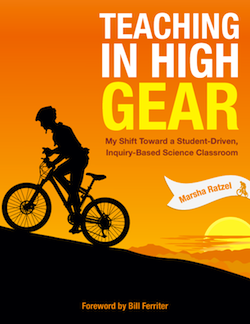
Her eBook Teaching in High Gear: My Shift Toward a Student-Driven, Inquiry-Based Science Classroom is available from Powerful Learning Press. (Read an excerpt at MiddleWeb.)

